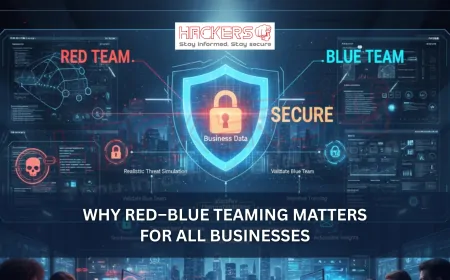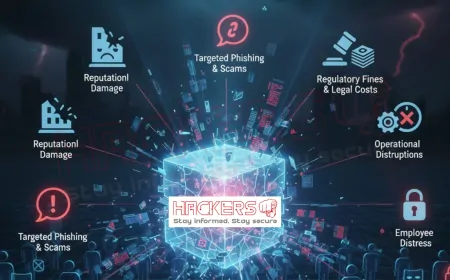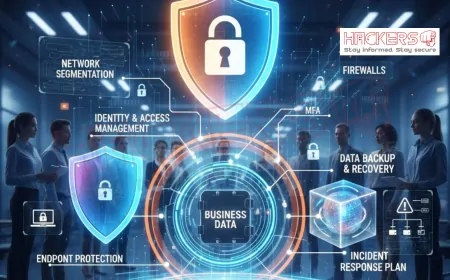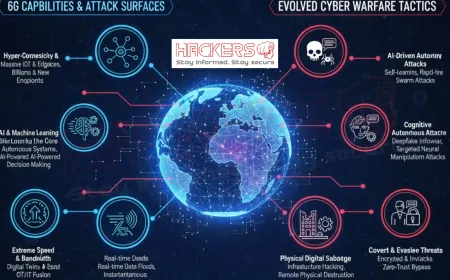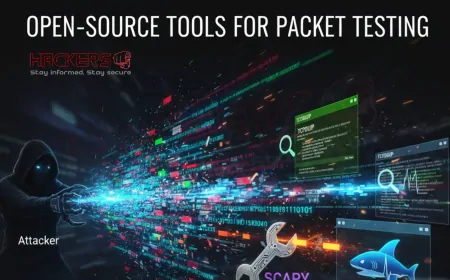What Are the Biggest Cyber Risks Facing Indian Telecom Operators?
It’s 11:47 p.m. in a bustling Mumbai suburb. A young professional is streaming a cricket match. A doctor in Delhi is on a video call with a patient. A farmer in Punjab checks weather updates on his phone. Then, suddenly, everything stops. No signal. No internet. No calls. For 18 million customers of a major telecom operator, the world goes silent. The cause? Not a storm or a cable cut. A cyberattack that quietly infiltrated the core network, disabled billing systems, and threatened to leak customer data. Within hours, the company scrambles. Regulators demand answers. Customers panic. The stock price drops 12 percent overnight. This is not a prediction. It’s a wake-up call. India’s telecom sector powers 1.2 billion mobile connections, 900 million internet users, and the backbone of digital India. But with great connectivity comes great risk. From state-sponsored hackers to ransomware gangs, Indian telecom operators face a storm of cyber threats. This blog breaks down the biggest risks, explains them in plain language, and shows how the industry can fight back. Written for executives, engineers, and everyday citizens, this guide reveals what’s at stake and what must be done to protect the network that keeps India connected.

Table of Contents
Why Indian Telecom Is a Cyber Target
India’s telecom market is massive. Three private giants: Reliance Jio, Bharti Airtel, and Vodafone Idea: dominate alongside state-owned BSNL and MTNL. Together, they manage 1.2 billion subscribers, 5G rollouts, fiber networks, and cloud services. This scale makes them irresistible to attackers.
Here’s why Indian telecom is in the crosshairs:
- Critical Infrastructure Status: Telecom is the backbone of banking, healthcare, and government. A breach ripples nationwide.
- Geopolitical Tensions: Border disputes and trade wars make Indian networks targets for foreign state actors.
- Rich Data Trove: Call records, location data, Aadhaar-linked KYC: it’s a goldmine for espionage and fraud.
- Rapid Digital Growth: 5G, IoT, and UPI rely on telecom. Weak links threaten the entire digital economy.
- Legacy Systems: Many operators still run old 2G/3G equipment with known vulnerabilities.
The CERT-In reported a 300 percent rise in telecom-related cyber incidents between 2021 and 2024. The stakes have never been higher.
The Top 7 Cyber Risks Facing Operators
Not all threats are equal. Here are the seven biggest risks, ranked by likelihood and impact:
| Risk | How It Works | Why It Hurts Indian Operators |
|---|---|---|
| Ransomware | Encrypts critical systems; demands payment | Disrupts billing, customer care; leaks data if unpaid |
| Signaling Attacks (SS7/Diameter) | Exploits core network protocols to intercept calls/SMS | Enables fraud, spying; erodes trust in OTPs |
| Supply Chain Attacks | Compromises vendors or software updates | Infects entire network via trusted partners |
| DDoS Attacks | Floods network with fake traffic | Knocks out websites, apps, and voice services |
| Insider Threats | Disgruntled staff or contractors leak data | Hard to detect; can sell access to criminals |
| 5G-Specific Vulnerabilities | New protocols, network slicing, edge computing | Expands attack surface; enables IoT botnets |
| Phishing and Social Engineering | Tricks employees into revealing credentials | Gives attackers initial access to core systems |
Each risk exploits a different weakness: technology, people, or process. Together, they form a perfect storm.
Real Incidents That Shook the Industry
India has seen its share of telecom breaches. Here are three that changed the game:
- 2019: Airtel Data Leak
Over 300 million customer records exposed via an unsecured API. Included names, phone numbers, and Aadhaar details. The breach went undetected for months. - 2022: Vi (Vodafone Idea) Ransomware
A ransomware gang claimed to encrypt internal servers. Demanded $5 million. Customer impact was limited, but trust took a hit. - 2023: Jio Billing Outage (Suspected Cyber)
A 6-hour nationwide billing and recharge failure affected 400 million users. Officially blamed on “technical glitch,” but cybersecurity experts suspect a DDoS or internal sabotage.
Globally, the T-Mobile breach (2021) exposed 54 million records. The Optus attack (2022) in Australia leaked 10 million customer details. Indian operators are next if they don’t act.
The Human and Economic Impact
A telecom breach isn’t just an IT problem. It’s a national crisis:
- Financial Loss: A single ransomware attack can cost ₹100 crore in recovery, fines, and lost revenue.
- Customer Churn: After a breach, 20 to 30 percent of users switch providers within six months.
- Regulatory Fines: Under the Digital Personal Data Protection Act (DPDP) 2023, fines can reach ₹250 crore per incident.
- National Security: Leaked call records can expose journalists, activists, and officials to surveillance.
- Public Safety: A compromised network can block emergency 112 calls during disasters.
In 2024, the average cost of a data breach in India was ₹17.9 crore, per IBM. For telecom, it’s likely double due to scale.
What Operators Are Doing Today
Indian telecom isn’t asleep. Here’s what’s working:
- Network Segmentation: Separating billing, core, and customer-facing systems
- Zero Trust Architecture: No device or user is trusted by default
- AI-Powered SOCs: Jio and Airtel use machine learning to detect anomalies in real time
- Employee Training: Mandatory phishing simulations and security awareness
- Vendor Audits: Regular penetration testing of Huawei, Nokia, and Ericsson equipment
- Encryption: End-to-end for 5G voice and data; TLS for web services
But gaps remain. Many smaller ISPs and tower companies lack basic firewalls. Legacy 2G systems are still active in rural areas. And insider threats are under-addressed.
Emerging Risks on the Horizon
The future brings new dangers:
- Quantum Computing: Could break current encryption in minutes
- AI-Driven Attacks: Deepfakes to trick call center staff; automated phishing at scale
- IoT Botnets: Millions of 5G-connected devices (smart meters, cameras) used in DDoS
- Satellite Network Hacks: Jio and Airtel’s satellite plans expand the attack surface
- Supply Chain via China: Geopolitical bans create pressure; backdoors remain a fear
The TRAI and DoT are drafting 5G security standards, but implementation lags.
A Practical Action Plan for Operators
Defense starts now. Here’s a 12-month roadmap:
- Month 1 to 3: Map all assets. Identify crown jewels (core network, billing, customer DB)
- Month 4 to 6: Deploy zero trust. Enforce MFA everywhere. Segment OT from IT
- Month 7 to 9: Run red team exercises. Simulate SS7 and ransomware attacks
- Month 10 to 12: Train all 50,000+ employees. Launch customer awareness campaigns
- Ongoing: Share threat intel via Telecom ISAC. Patch within 48 hours. Backup offline
Budget 3 to 5 percent of revenue for cybersecurity. It’s cheaper than a breach.
Conclusion
Indian telecom operators are not just phone companies. They are the nervous system of digital India. A single breach can silence a billion voices, cripple commerce, and compromise national security. The risks: ransomware, signaling attacks, supply chain sabotage: are real, growing, and uniquely dangerous in a market this large.
But the power to protect lies within. With strong defenses, employee vigilance, regulatory support, and public-private collaboration, Indian telecom can lead the world in secure connectivity. The network must not just connect people. It must protect them.
Start today. Audit one system. Train one team. Report one suspicious email. Because in telecom, trust is the signal. And cybersecurity is what keeps it strong.
What is SS7 in telecom?
Signaling System 7 is a protocol used to route calls and SMS between networks. It has known flaws that allow interception.
Why is 5G more vulnerable than 4G?
5G uses more software, network slicing, and edge computing, creating new entry points for attackers.
Can hackers listen to my calls?
Yes, via SS7 or Diameter exploits. Encrypted VoLTE calls are safer, but not all networks use it.
What is a supply chain attack?
When a vendor’s software or hardware is compromised before it reaches the operator.
Are state-owned operators like BSNL safer?
No. They often run older systems and have slower patch cycles, making them prime targets.
What is DDoS?
Distributed Denial of Service: flooding a network with fake traffic to knock it offline.
Can ransomware shut down a telecom network?
Yes. It can encrypt billing, customer portals, or even core switches if not segmented.
Why is customer data so valuable?
It includes Aadhaar, bank details, location history: perfect for fraud, blackmail, or espionage.
What is zero trust in telecom?
A security model where no user or device is trusted by default, even inside the network.
Are Chinese equipment bans helping security?
Partially. They reduce one risk but don’t fix internal vulnerabilities or employee errors.
What is Telecom ISAC?
A group where operators share cyber threat intelligence to respond faster.
Can customers protect themselves?
Yes. Use strong passwords, avoid SMS OTPs for banking, and report suspicious texts.
What is network slicing?
A 5G feature that creates virtual networks for different uses (e.g., IoT, video). Each slice is a potential target.
Why do insiders pose a risk?
They have legitimate access and know where sensitive data lives.
Is Jio safer than Airtel or Vi?
No operator is immune. Security depends on investment, not market share.
What is the DPDP Act?
India’s 2023 data protection law. Breaches can lead to fines up to ₹250 crore.
Can quantum computing break telecom security?
In the future, yes. Operators must adopt post-quantum encryption soon.
Should I worry about my location being tracked?
Yes. Telecom stores precise location data. A breach can expose your movements.
Who regulates telecom cybersecurity in India?
DoT, TRAI, CERT-In, and NCIIPC set guidelines and respond to incidents.
Is the answer just “more firewalls”?
No. Firewalls help, but training, patching, and monitoring are equally critical.
What's Your Reaction?








